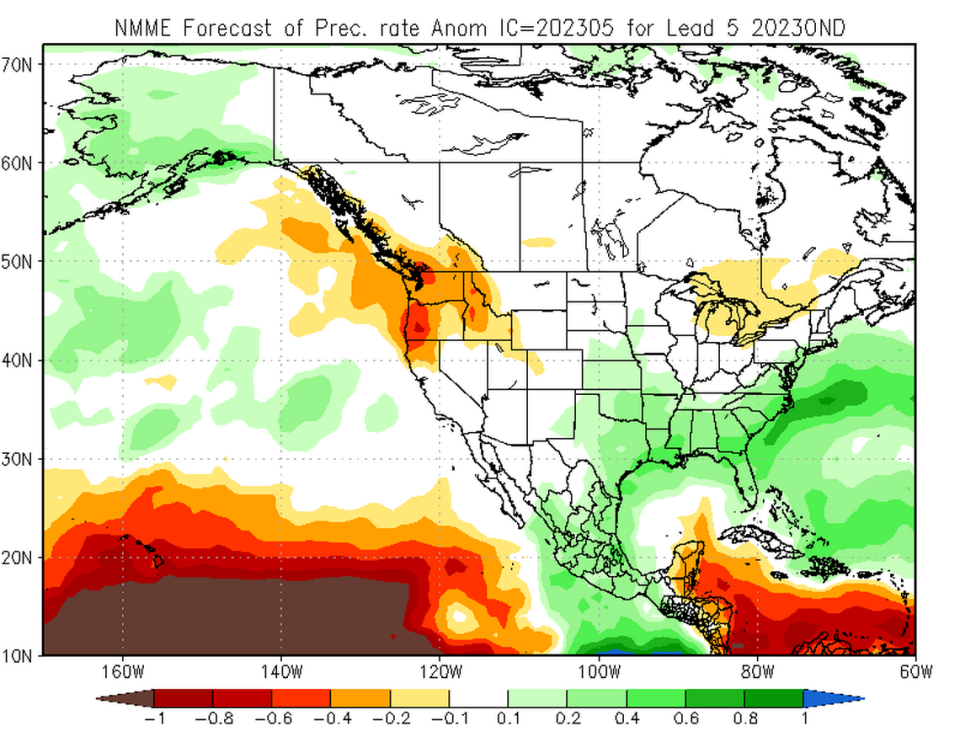El Niño is officially here. How will it affect California weather?
The National Oceanic and Atmospheric Association officially declared an El Niño for 2023. What does that mean for California weather?
NOAA announced Thursday that El Niño conditions are present and will strengthen in the northern hemisphere this winter. Scientists previously reported that there was more than 90% chance that an El Niño will develop from May to June in a May 11 update, persisting into the winter.
The Sacramento Bee previously reported how this change from the outgoing La Niña could affect the Golden State. Here’s what we found:
Editor’s note: The following was originally published on May 24, 2023. It has been edited for context.
What is El Niño?
El Niño is a weather phenomena when there is abnormally warm sea surface temperature in the Pacific Ocean. It can affect weather patterns across the world, with most of the impact hitting the United States in the fall and winter, said David DeWitt, director of the National Oceanic and Atmospheric Association’s Climate Prediction Center.
Strong El Niños are expected to bring a lot of rain and snow to the state.
According to the Water Education Foundation, an El Niño year often brings above-average precipitation, strong atmospheric rivers and wetter conditions to Northern California. As a result, this can cause floods and landslides.
On the East Coast and in the southern United States, NPR reported, temperatures are expected to be above normal and heat waves more extreme due to the rising sea temperatures.
El Niño vs La Niña
While an El Niño is associated with warm ocean temperatures, its counterpart, La Niña, happens when sea temperatures are cooler than usual in the central and eastern tropical Pacific Ocean. During this time, California often experiences drier conditions, but far north parts of the state and the Pacific Northwest see heavier rains and flooding.
Watch La Niña fade and El Niño approach in the tropical Pacific Ocean in 2023. For a deeper look check out this post https://t.co/PvHloFhSpL #cawx #ElNino pic.twitter.com/ce6iG6cA37
— NWS Bay Area (@NWSBayArea) May 23, 2023
Early weather predictions for California
It’s going to be a hot summer in California.
Dr. Paul Ullrich, professor of regional and global climate modeling at UC Davis, predicts that the Northern California region may see humid heat waves this summer due to the winter downpour, but El Niño doesn’t necessarily have a hand in it.
‘Nastier’ heat waves possible for Northern California this summer. Here’s the latest outlook
“The effect is very small,” said Ullrich. “You can’t say that El Niño is the reason why we had an extreme heat wave.”
Early predictions for California show that most of the state will have near-average rain from October to December, with the exception of the northernmost regions where it is below normal.

“This prediction is going to change,” DeWitt said. “It’s going to change every month as this El Niño evolves...”
Early forecasts for fall and winter seasons show temperatures leaning above average throughout most of California.
Most of the impact of El Niño will be in the southern part of the globe, down past Southern California and Mexico, the NOAA forecast map shows. There, conditions are expected to be dry.
But it’s been clear, lately, that it’s hard to pinpoint what the weather will exactly look like in California.
Last winter, the region faced a La Niña winter for its third year. Forecasts stated that California would expect a mild and drier than normal winter — typical of the system as it’s known for weaker storms and less moisture in the atmosphere.
The state, however, experienced the opposite. Northern California saw its wettest winter with back-to-back storms drenching the region and piling upa record snowpack.
What do you want to know about life in Sacramento? Ask our service journalism team your top-of-mind questions in the module below or email servicejournalists@sacbee.com.
